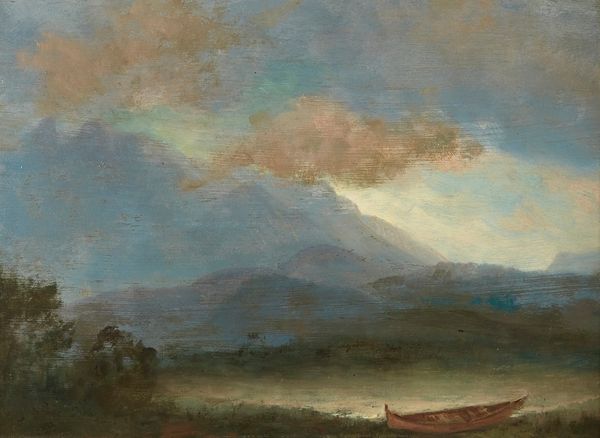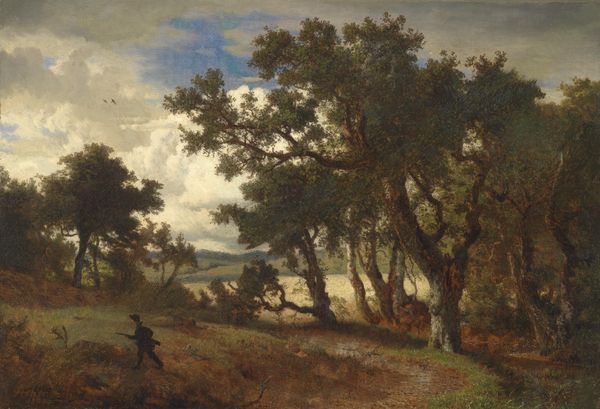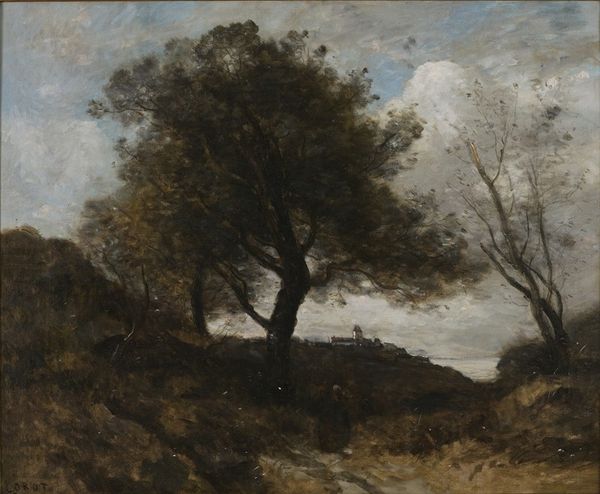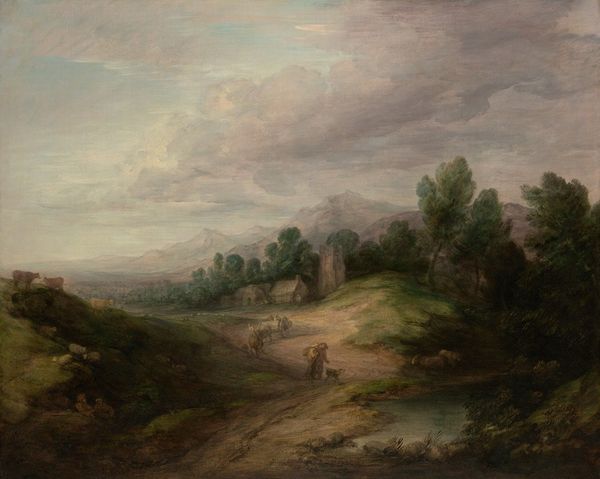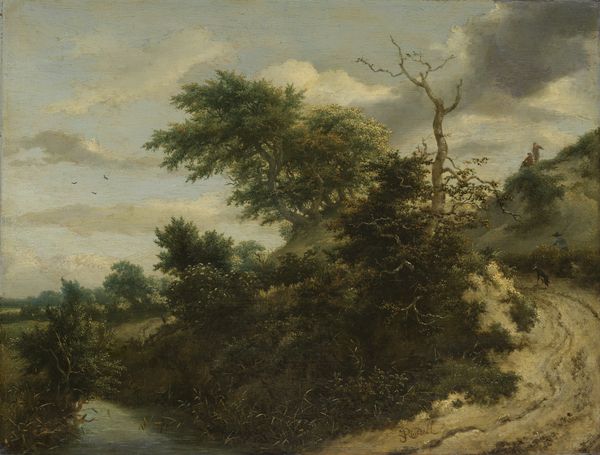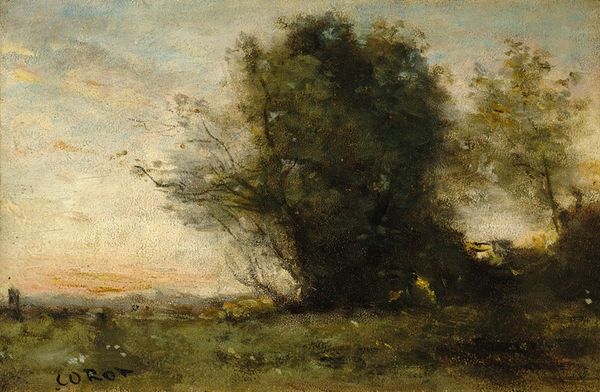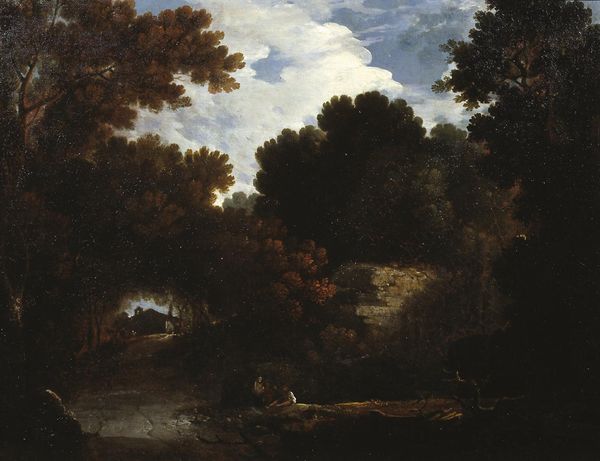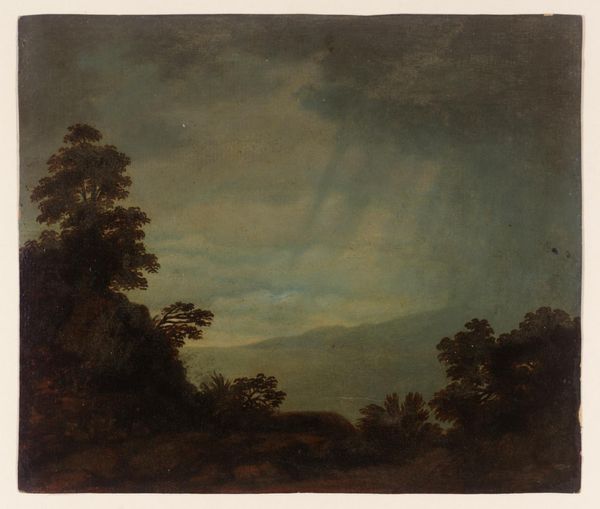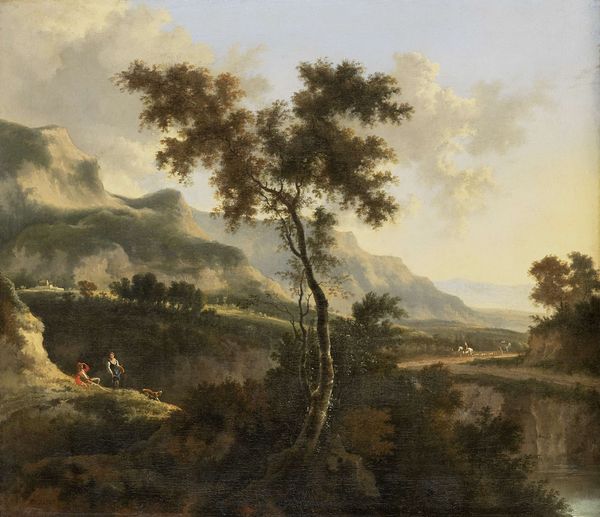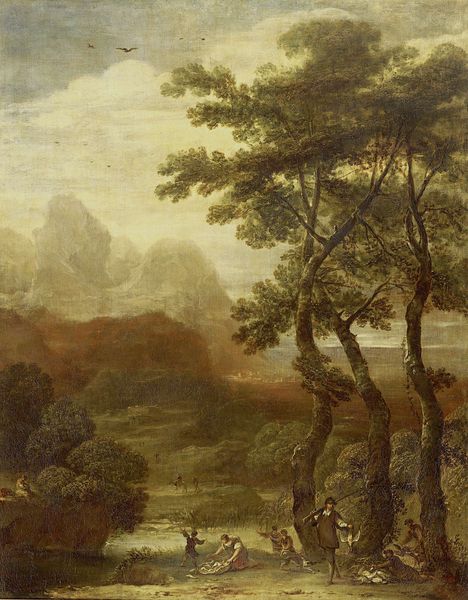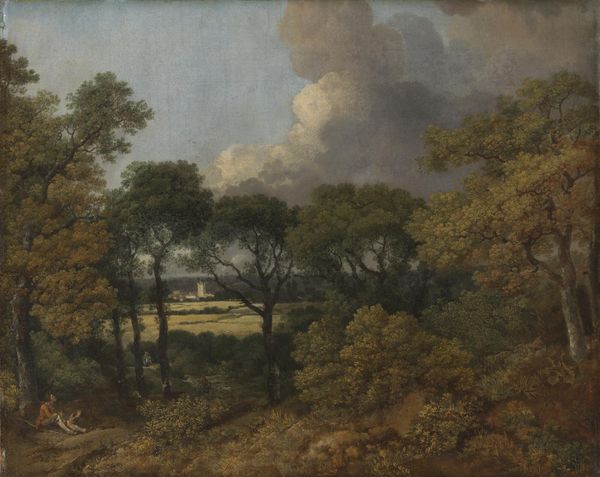
Copyright: Public Domain: Artvee
Editor: So, this is "Mountain Landscape at Sunset" by Jean-Honoré Fragonard, created around 1765, using oil paint. The texture seems thick in places... impasto, maybe? I'm really struck by the contrast between the light sky and those dark, brooding trees. What can you tell me about it? Curator: Look closely at the materiality of the paint itself. Notice the varied brushstrokes and how they build up to create the forms. This wasn’t just about depicting a pretty scene. Consider the labour involved, the sourcing and processing of pigments, the craft of preparing the canvas. Where did Fragonard get his materials? Were these locally sourced pigments or exotic imports? These details reveal a network of trade and consumption integral to art production. Editor: That's fascinating, something I hadn't considered. The "plein-air" tag made me think more about just painting outside, capturing the light, not the supply chain. Does the use of "plein-air" change the production? Curator: Precisely! Painting en plein air demanded portable equipment, prepared canvases, and a different kind of labor. Consider it in contrast to studio work: what social classes and settings support "landscape" work done on location, and how might these plein-air works be valued versus pieces developed and finished in a formal workshop? These considerations redefine our appreciation of the art as process rather than simply a product of talent. Editor: That makes perfect sense. Seeing it that way, the sunset isn't just romantic, but indicative of a specific historical relationship to materials and landscape. Curator: Exactly. We moved beyond a mere appreciation of artistic genius toward recognizing how the artwork is inextricably tied to production means and the society of consumption which fostered its creation. What seemed, at first glance, idyllic, in the context of that era, also tells us something crucial about labor. Editor: I learned a lot looking beyond the surface of the image itself and thinking about what went into making the materials for the paint and the impact that would have on Fragonard's artistic practice! Curator: And by investigating production we can learn more of what value society assigns an aesthetic scene versus the work invested. It all reveals so much of that moment.
Comments
No comments
Be the first to comment and join the conversation on the ultimate creative platform.
